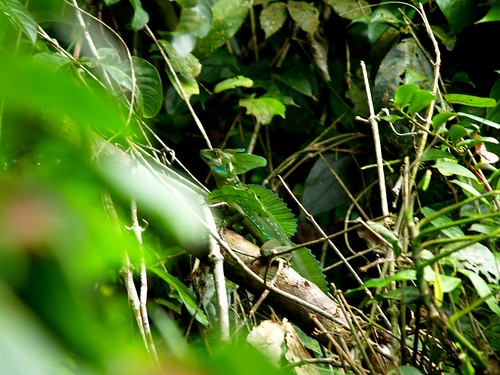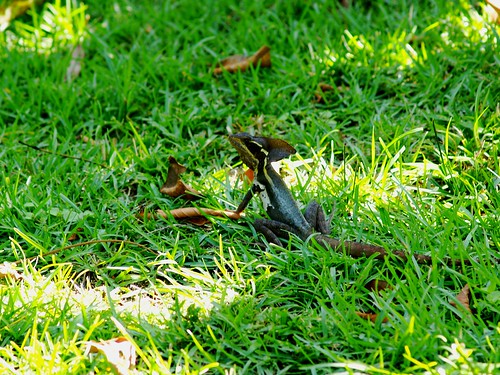Contents
Solutions
Water is an excellent solvent of other polar compounds. Table salt (NaCl) ionizes readily in water. The δ– O associate around Na+ while the δ+ H associate with the Cl–. If NaCl is dissolved in H2O, what do you think happens to the intermolecular interactions between water molecules? What do you think would happen to the H-bonds? Would you expect there to be a difference in the surface tension? How do you think this explains the difference of boiling or freezing?
Running on Water


Lizards of the genus Basiliscus have the nickname “Jesus Christ lizard” for their very special adaptation regarding water.
In the face of danger, these lizards run on their hind legs across water to escape predation. Their hind legs have long toes that help in increasing surface area to distribute their weight so they can propel themselves on the surface of the water. They do not sink because the surface tension of the water is not broken by the large surface covered by their feet. After about 4.5m, they lose sufficient momentum to propel themselves on the water surface and break through. H-bonds enable this adaptation.
What if?
The namesake of these lizards walked on water but was also able to turn water into wine. Wine is a solution of ethanol (11%) in water. Ethanol has a polar end and a non-polar end.
- How successful would the basilisk run on wine?
- Why?
- How could you test this without necessarily using a lizard?


